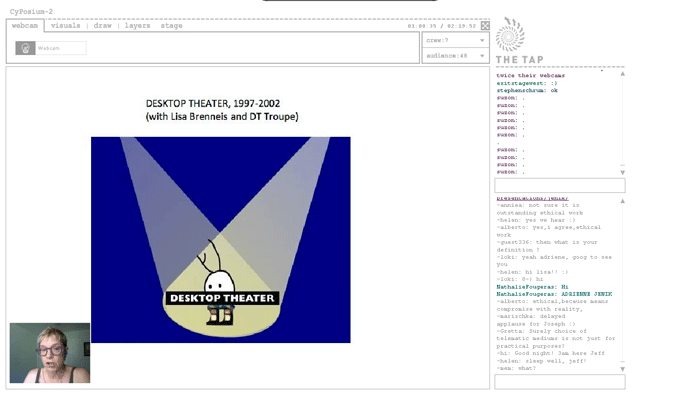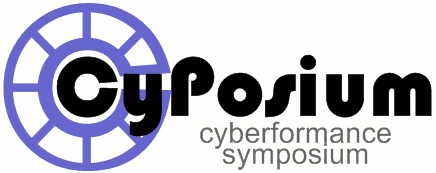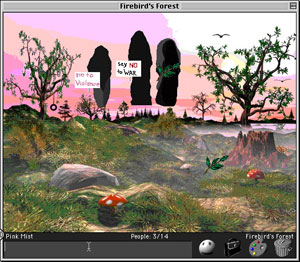Adriene Jenik
So far, and yet, so close: Lessons from Telematic Improvisation
Abstract: When improvising across distances (as in telematic improvisation), how do artists utilize the unique properties of distance? What types of performance cues develop within a networked improvisatory environment? This paper draws upon my experience directing improvisational performance projects (Desktop Theater, SPECFLIC and Open_Borders Lounge) to address these and other questions. In doing so, I hope to expand the understanding of telematics performance practice and address not only differences in form and technique; but the ways in which socio-political context, language differences, and time zone shifts can contribute to a critical conversation on improvisation. I will examine long-held notions of the centrality of proximal bodies in improvisation. Though the subject of the live body has been interrogated in relation to technological prosthesis and the residue of the live body has been acknowledged even in its mediated form, much remains to understand.
Bio: Adriene Jenik is a telecommunications media artist, research professor and Katherine K. Herberger Endowed Chair in Fine Arts at Arizona State University’s School of Art. Her works, including Mauve Desert: A CD-ROM Translation, El Naftaazteca (with Guillermo Gomez-Pena), Desktop Theatre (w/Lisa Brenneis and the Desktop Theater troupe), SPECFLIC, and Open_Borders (with Charley Ten), harness the collision of “high” technology and human desire to propose new forms of literature, cinema, and performance.
http://www.adrienejenik.net/


